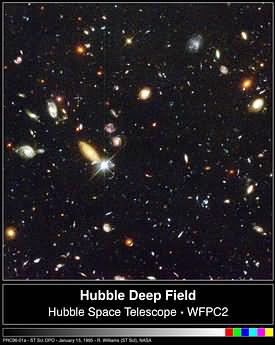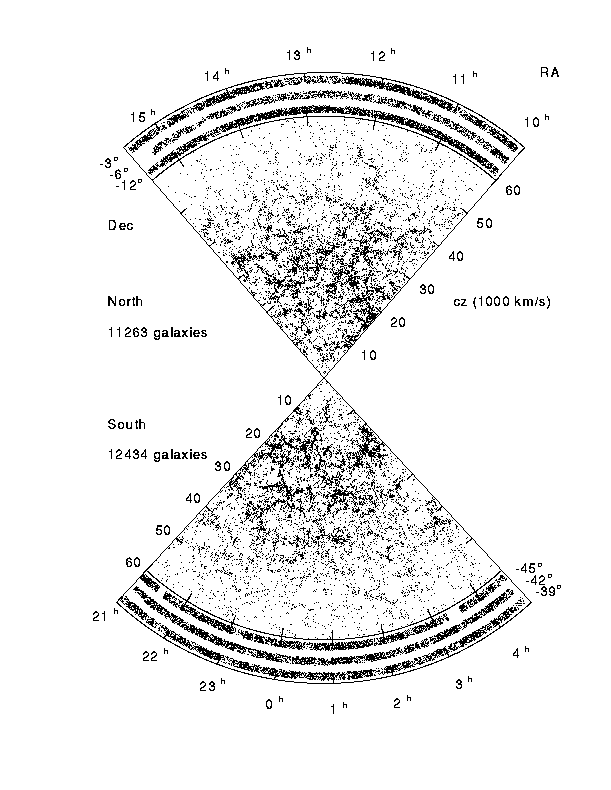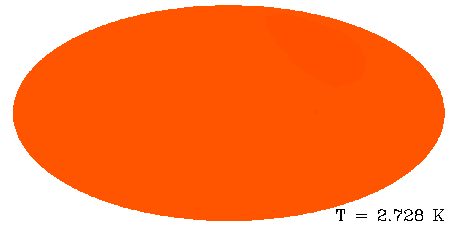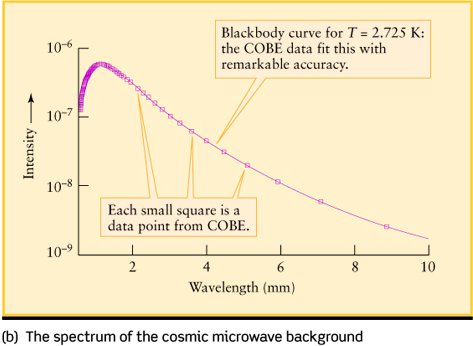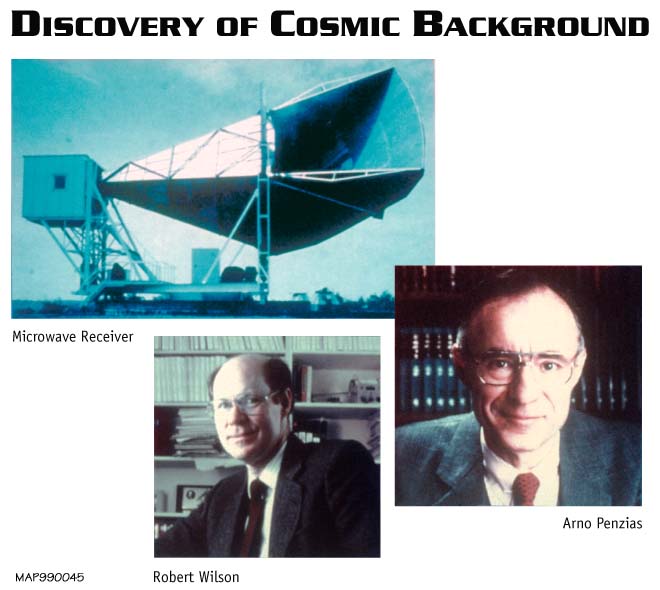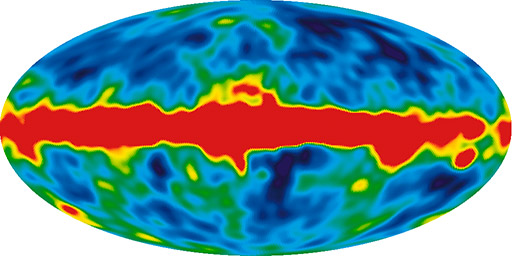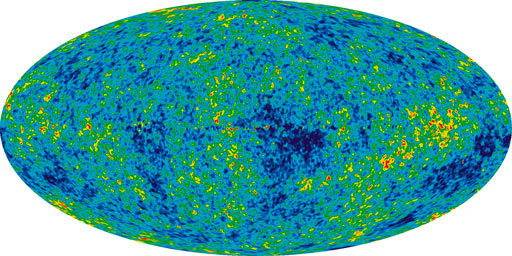- Early astronomers Edmund Halley and Heinrich Olbers (1758 - 1840)
wondered why the sky is dark at night.
- They wondered, if the sky is filled with an
infinite number of stars, the sky shouldn't be dark.
- If you look in any direction, your line of sight should
always hit a star, and no matter how far away it is, some
of its light should hit your eyes. This statement holds for
either stars or galaxies.
- This statement is known as Olbers' paradox.
- (Although the brightness of a star is inversely proportional
to the square of the distance, the number of stars counted
increases as the square of the distance.)
- Edgar Allen Poe (1809 - 1849) came up with the following
solution to Olbers' paradox:
Since light has a finite speed, if the Universe is not
infinitely old, then light from the most distant
sources has not had enough time to travel to us.
- Poe's solution suggests that the Universe had an
early period when no stars (or galaxies) existed, and that
they only formed some time ago. In other words the properties
of the Universe are not constant in time.
|
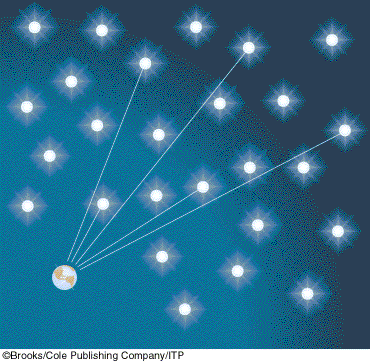
|

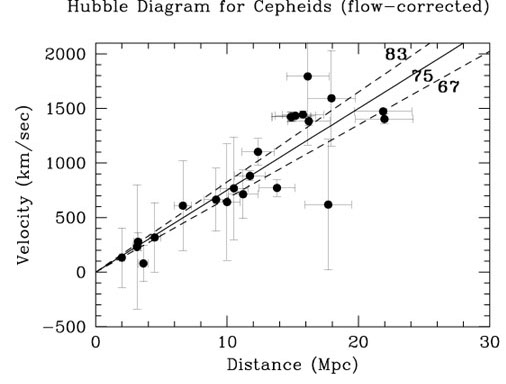
 Evidence supporting the view that a galaxy's redshift (z)
is proportional to its distance away from us for other
galaxies:
Evidence supporting the view that a galaxy's redshift (z)
is proportional to its distance away from us for other
galaxies:
